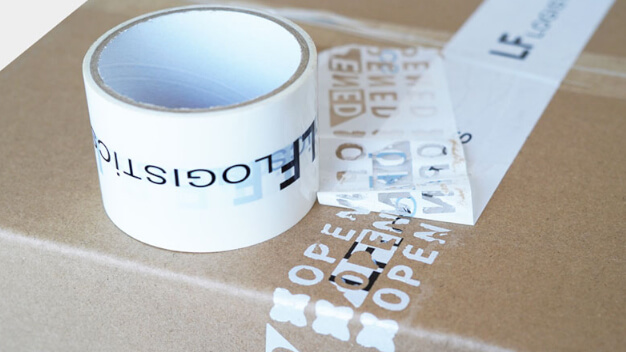Adhesive tapes are utilized in many ways, but the essential function is to secure them. A broad spectrum of sticky tape types can be categorized depending on their use and application to materials. Security is one of their many important uses. Keep reading to learn all about adhesives, their origin, their types, and their applications.
What Exactly Are Adhesive Tapes?
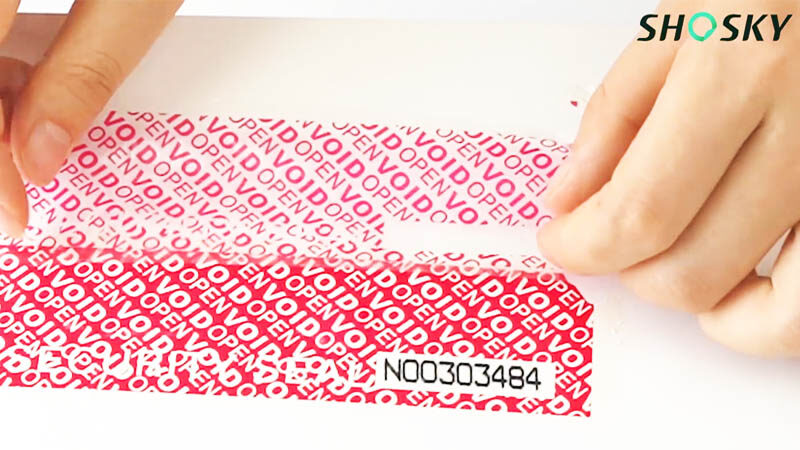
Many familiarize themselves with sticky tapes, cello tapes, and adhesive tapes. However, they all mean the same thing: sticky tape. They are one of the most widely used materials in most security industries due to their powerful securing abilities.
To put it simply, adhesive tapings make use of an adhesive coating. These coatings are susceptible to pressure, so they are taped using gentle force and heat from fingers. They use a material backing on which the adhesive layer is coated. This material can range from plain paper to tin foil or even a piece of cloth. Some also claim to use plastic films as the backing material. While understanding tapes can seem like an easy task, there is a shocking number of adhesive tapes, each possessing no-like characteristics.
Daily-use adhesive tapes have a cover or a lining material that seals the sticky adhesive intact. This arrangement allows the user to peel the lining off when the tape is ready for use without losing much of the valuable adhesive. Other adhesive tapes are used for various purposes; hence, they are found with different coverings to serve that purpose. Pressure-sensitive tapes, also known as PSA tapes, are the most convenient adhesive taping, as their application requires no solvent or external factor to make it stick. When the adhesive is applied only on one side, it is called a single-sided adhesive, while double-sided ones have both sides coated with pressure-sensitive adhesive.
PSA tapes can be applied the way they are because they are glued at room temperature. They have great gumming ability without any external application of heat or water. It is a surprising fact that domestic tapes fall into this category. Other adhesives require applicators to bond with the material because they exhibit viscous qualities through such pressures. These pressures are technically referred to as ‘bonding pressure’. In a nutshell, the backing material is referred to as the ‘tape’, on which an adhesive fluid is coated. This sticky coating differs from tape to tape, giving rise to many types of tape, such as resealable bag-sealing tape.
The History Behind Adhesive Tapes
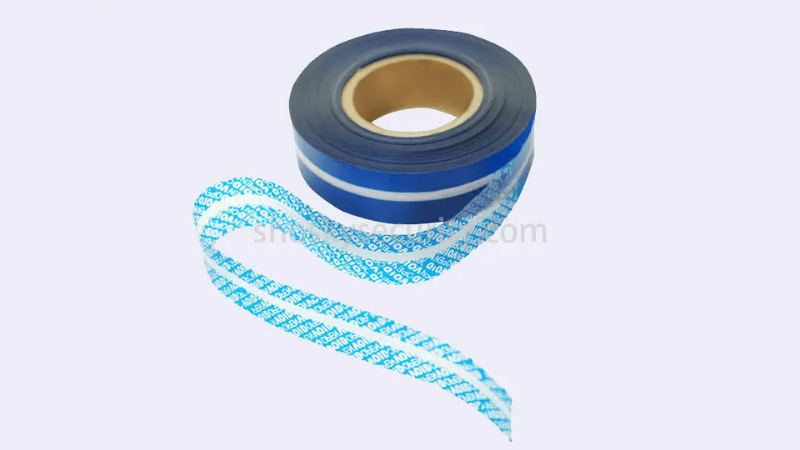
As already mentioned, the invention of viscous structures called adhesives carved humanity into what it is today. It is mind-boggling how a simple function of sticking to materials and objects caused a sensation, especially during the industrialization phase. Before moving on to the ‘tape’ part, it is first essential to understand the concept behind tackiness.
It began in ancient Egypt, where there was a need to keep specific tangibles together. However, the tamper-proof tape is still far out of reach. The history and invention of viscid adhesives are accredited to the woodworkers of that time, who noticed this characteristic right inside Mother Nature. In the late 1800s, the first natural adhesive took the form of sap (resins), honey wax from honeybees, and animal collagen.
However, this was not adequate at those times. As they work with harsh substances and materials, mere gum would not do the trick. Even epoxies had severe disadvantages in terms of durability, strength, and extra stickiness. In the early 1900s, this problem was wiped out for good. Adhesive tapes came into existence.
Since then, their usage has expanded to lengths one could not imagine, and it still is in the process of expansion. Old adhesive tapes have been developed using simple materials like paper and gum. This was not feasible, primarily when they were used in painting work. This caused such a mess in position and fuss from the bosses for peeling off the paint along with the adhesive. They had no choice but to develop a dry glue that does its job without ruining the material underneath.
That’s right, masking tapes were invented, and it is a canvas artist’s favorite tool. The need is indeed the mother of invention.
What Are Adhesive Tapes Made Of?
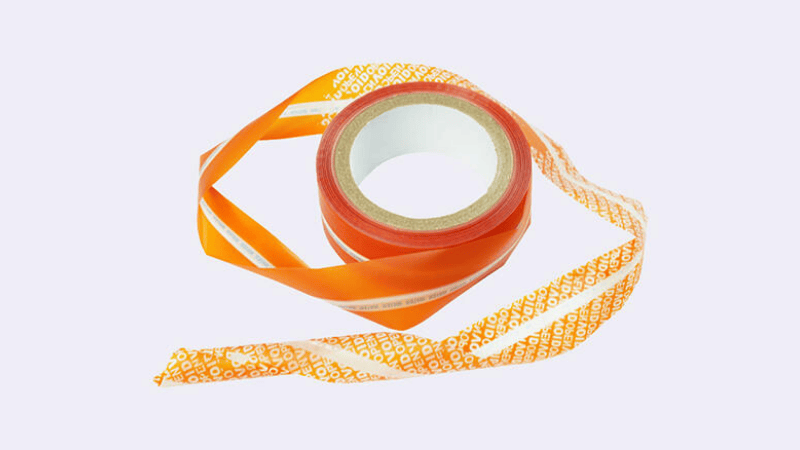
Tapes are essentially a combination of adhesive and backing material and are glue and paper, respectively, in their simplest form. The adhesive coating is made on this carrying medium and rolled together to form regular tape. They can further be cut down into sizable lengths and widths to serve different purposes.
Types Of Adhesives Are Used For Tapes
As noted earlier, a broad spectrum of sticky tape types can be categorized depending on their use and application on materials. While some can be activated through pressure, others have complex designs that can only work in certain conditional mediums. Tapes are made of carrier material and the respective adhesive. That said, not all adhesives can be used for taping purposes. The following are most commonly used in the security industry:
- Acrylic: Provides strong and intense resistance from environmental conditions; minimal setting time in comparison to other kinds of adhesives
- Epoxies: Also known as resins, gum material that does not shrink with curing and is self-protective of environmental and chemical changes
- Rubber: Based on solid compounds such as butadiene-styrene, polyisobutylene, butyl, and nitrile; extraordinarily flexible and adjustable sealants
- Silicone: Highly flexible and temperature-resistant
- Other: Isocyanate sealants and polyurethane-based adhesives form a combination of all the above characteristics. They exhibit strength, utility, long lifespan, and adjustability.
Knowing the type of adhesive used in a tape can reduce wrong applications and increase security.
Materials Are Used For The Backing Or Carrier
Adhesives and backing materials go hand-in-hand. They are complementary; not one can be prioritized over another regarding tape manufacturing. Tapes have two essential components: the adhesive and the carrying material. Although understanding the adhesive can prove crucial for its usage, the backing material is equally important because it must go along with being used. Adhesive films can be made from various materials depending on the purpose. The most common ones are listed below:
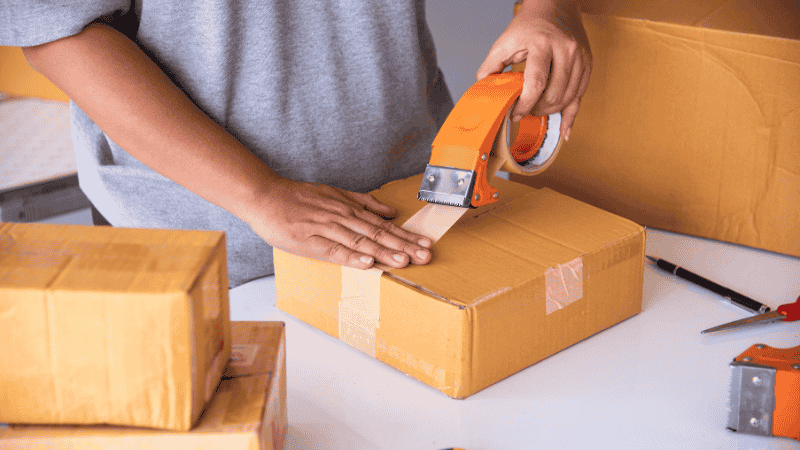
- Paper: Also referred to as flat-back tape
- Cloth: Uses a fabric or a piece of the woven layer
- Felt: Non-woven materials that provide scratch resistance and protection
- Foam: Usually combined with a cover liner; its primary purpose is for mounting and sealing.
- Metal Foil: Aluminum and tin metals are often used as backing materials. Lead foils are also widely used due to their heat-resistance properties. They are excellent backing materials for holding objects exposed to high moisture and humidity. While metallic tape designs typically cater to sealing and seaming, aluminum-based ones are pre-laminated on plastic or paper bases to exhibit strong properties. Copper carriers are widely used in manufacturing PCBs.
- Plastic Film or Polymers: They are generally categorized as thermoplastics and thermosets based on the number of plastic layers they incorporate. They are widely used for designing due to their layering abilities and because they can come in any style- clear, organized, or mono-colored.
- Mylar: Mylar is also known as polyester or polyester-based products
- Filament bundles (or strap tape) consist of millions of fiberglass filaments converted into a thread-like structure. It is more versatile than other backing materials and can stick differently shaped objects. They are commonly used for storage and shipping.
- Double-sided tapes must have a covering liner or release liner on at least one surface. These liners are preferably made from solid and smooth materials like silicone or paper.
Adhesive tapes mimic ribbons in terms of appearance. These carrying materials are typically films that are coated with different adhesives. Once rolled into a tape, they are cut into various widths via a slitting machine. Multiple factors affect the quality of a tape, such as winding tension. The tension that is too high or too low can cause defects and imperfections in the tape. The high degree of pressure will increase the stretchability of the tape. These defects in an adhesive security tape are referred to as telescoping or gapping. They need to be carefully done. Any compromisation shall affect other after-process factors like storage and application.
Different Types Of Adhesive Tapes
Security Tape
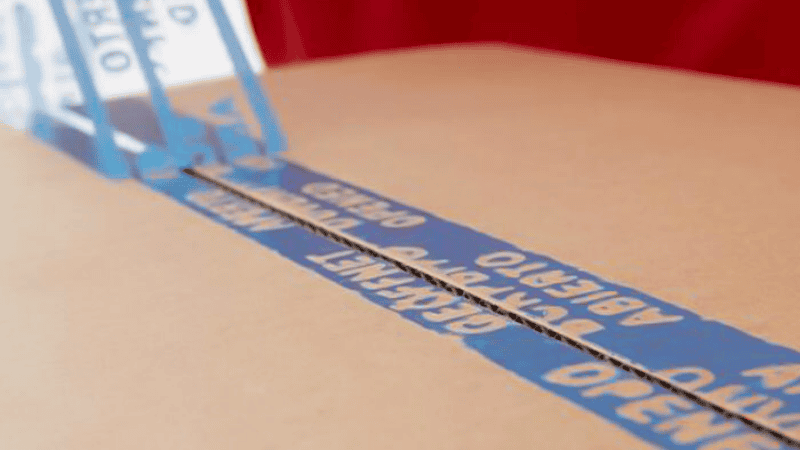
Security tapes are one of the primary essentials every security industry should possess in adequate numbers. They are beneficial for packaging and shipping over long distances and even overseas. Security tape is a security label that protects the objects stored inside. They are handy for the storage of sensitive and fragile things. As their primary purpose is to secure contents, they are naturally strong and versatile, so much so that sometimes shippers use them on the whole box for good measure. They have a similar appearance and function to packing tape, but security labels are often on the cheaper side of the spectrum.
In a nutshell, they prevent the risk of shipping losses through pilferage, theft, and adulteration. This falls under the category of a PSA, just with tamper-evident tape properties. It is essentially a security seal against common types of pilferage. They are quite a necessity in the case of authentication products. They have been in use for an extremely long period, and the reason is because of their versatile applications and advantages.
Security Tape Applications:
- Security labels can be used on containers of any size, such as small bottles or even corrugated boxes. In these instances, the adhesion and strength of bonding are essential. They are excellent for securing contents for shipping or storage.
- A tamper-evident tape is all you need when mimicking regular packaging tapes. It sometimes happens that a queer tape can draw attention and suspicion among people. A security tape that does not look special can conceal the item’s value. They are available in different colors as well!
- As mentioned earlier, security tapes are part and parcel of solid security, and no securing department can be successful without one. One layer of security taping can only do so much. As such, they are accessible to solvents and environmental temperatures.
Security Tape Advantages:
- Capacity: A tamper-evident tape can conceal a box of any size. There has been a growing demand for storage optimization, and security tapes can fulfill that need by providing bulkiness and high-capacity volume.
- Cost: Not only do they secure bags and bottles, but they are also cost-friendly and well within the budget of the standard security industry. It is the most cost-efficient option when securing any item.
- Lost-lasting: Another reason to be fed is that they are insanely durable for their kind. They do not lose their adhesive and strength properties. A good security tape can last for several years or even more!
- Resistance: They require efficient and minimal storage due to their excellent resistance to heat and other environmental factors.
Security Bag Tape
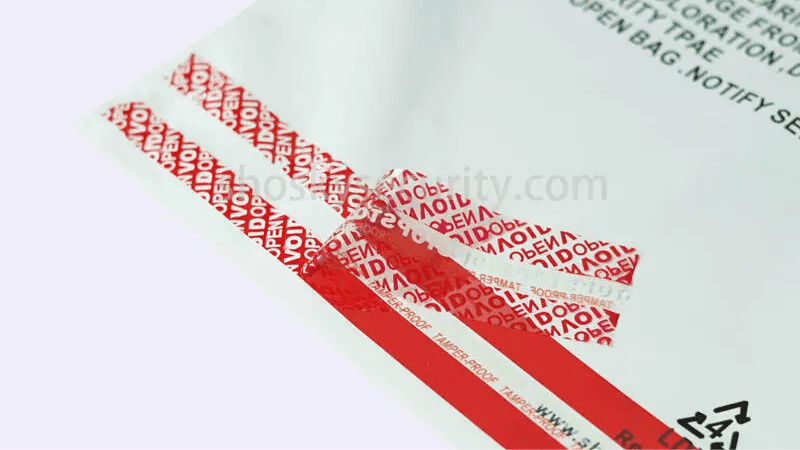
Security bag tapes are great protectors from unauthorized openings of valuable packages. The number of companies currently using these taped for carton packaging and sorts is increasing by hours. They are extensively used in securing bags and cargo crates. These cannot be tampered with, or at least without evidence. These tapes are used on bags to prevent damage from ambient temperatures and chromic action.
Security Bag Tape Applications:
- As these tapes are fabric-friendly, they have been extensively used in the clothing and medicine industries to protect valuable contents. They have indeed been expanding to regular manufacturers and retailers for supply-chain work.
- A bag sealing tape is also used for cash boxes and is designed for all types of material. Once applied to the bag, there is no doubt that it is safe for transportation and conveyance.
- They are used in industries and are also accessible for domestic use. They create a void and protect the contents from the ambient temperature.
Security Bag Tape Advantages:
- Prevents theft and crime: The most impressive thing about security bag tape manufacturing is that they are the epitome of “prevention before cure.” This is one of the most cost-effective solutions for theft-proofing. Rather than tracking down through expensive and inefficient means like cameras, they provide first and second-hand security by offering protection and leaving evidence in the time it doesn’t.
- Secures brand imaging: Not only does it connect things physically, but these tapes can also prevent theft or brand-counterfeiting. Various valuable consumables like clothing and electronic industries are at risk for this issue. Thanks to inexpensive security bag tapes, theft is no longer an issue to worry about. One can design their own custom tamper-proof tape to further make it original for their branding
- Lifts customer experience: Security bag tapes can secure a good product experience by preventing any damage to it in the first place. The customer service department can kick back and relax while the reviewing goes so high through the roof.
- Cost-beneficial: A simple cost-profit analysis can prove that they can secure the company’s goodwill
Duct Tape
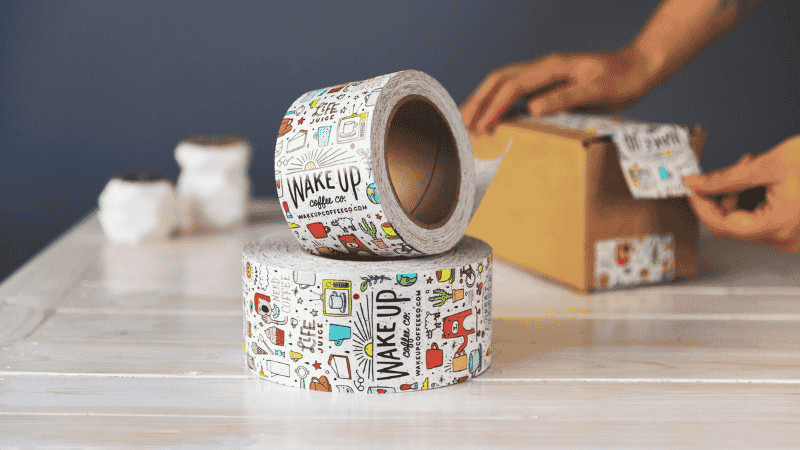
Almost everyone would require duct tape due to its versatility. They are the standard solution for most housing problems and repairs. The first ever duct tape has been blinded by gray, but presently, they are designed so brightly that they can be used for making wallets and whatnot! They fall into PSAs as a combination of polyethylene. They were initially called “duck-tape” due to their duck-feet adhesiveness property.
There are totally 7 types of duct tape that one can find. The general ones are extremely versatile, but they sacrifice their long life spans. The industrial-grade duct tape is made with polyethylene, which contributes to sturdiness and weighted adhesive coating. Professional grade ones are an upgraded version of industrial grade duct tape, having more strength and durability. The other ones include stucco tape, cloth tape, and true duct tape. Stucco tapes are used for construction purposes and window repairs. The main backlog that keeps people from choosing this tape is its weakness in extreme heat or cold conditions.
Duct Tape Applications:
- Domestic repairs
- DIYs
- Industrial grade workings
Duct Tape Advantages:
- Durability
- Sturdiness
- Versatility
Electrical Tape
Commonly known as insulation tape, they are a domestic necessity for houses having electricity issues. They can pretty much be used for anything that conducts electricity. It is made from several plastics but is mainly available in vinyl. This is because of its long life span, with added stretchability and insulation properties. Electrical tapes come in a wide range of varieties and colors, facilitating labeling and grouping functions. They are normally used in industries to indicate different voltages and degrees of security.
Being on the expensive side of the budget spectrum, it would be extremely time-consuming to use them. They require great attention to detail and expertise to use them effectively. Not only are they used for their incredible heat and electric sustenance, but they are also used for decorations and sorts. Electrical tapes must be tightly wrapped around the wires for best performance. Avoiding outdoor usage of electrical tape can expand its life. They can hide any scratches or openings present in a wire as well. A tamper-resistant tape with electrical insulation properties is extremely useful. Astonishingly, these tapes don’t stick to the opposite surface!
Electrical Tape Applications:
- Insulation
- Wound dressing
- Temporary fasteners
- Adhesive to metals and plastics
Electrical Tape Advantages:
- Flame resistance
- Pressure-sensitive
- Versatile
- Multi-purpose
- Conformability
Magic Scotch Tape
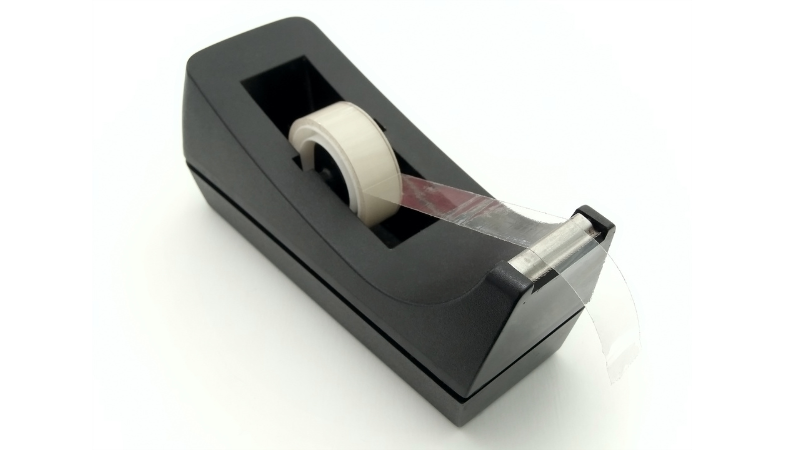
The first thing that comes to mind when people hear ‘adhesive tape’ or ‘tape’ is scotch magic tape. Being the most ubiquitous tapes, they are extremely popular for their versatility and invisibility. They are called so because of their outstanding quality to turn invisible when applied to envelopes or gift wrappers. They can also be written on and are available in every stationery shop. The scotch tape makes use of cellulose acetate, which is the cocktail of all adhesives. Mixing that with deionized water gives the tape a matte finish with a fuzzy look when wrapped around itself.
It was also used during the period of the Great Depression. Man-made acrylic-type adhesives also contribute to their stickiness and durability. The secret to its matte-like finish is the acetate compounds present in the adhesive backing. This is why it has a vinegar-ish appearance. They are the first choice when it comes to gifting and decorations. Though their adhesiveness is nothing compared to other types, they are in a league of their own!
Magic Scotch Tape Applications:
- Matte finish
- Photo-safe
- Dispenser availability
- Projects and files
- Mending tracings
- Drawings and illustrations
- Legal documents
Magic Scotch Tape Advantages:
- Invisibility
- Pen-friendly
- Moisture-free
- Easy storage
- Smooth application
- No yellowing or splitting
Masking Tape
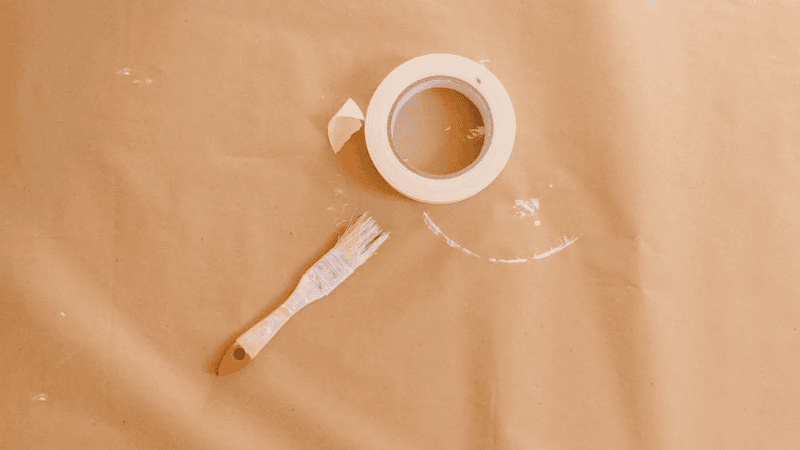
They are an artist’s need and a painter’s shield. It is also called ‘painting tape’ for this reason. Being pressure-sensitive, these tapes are called what they are due to their masking-off capabilities. Their weakness happens to be their strength. They can be torn effortlessly due to the paper component. They are among the first adhesive tapes to be invented back in 1925. They can easily be removed without peeling the under-surface. Another variant is called tape, which essentially masks tapes with decorations and designs.
Masking tapes are available in various ratings and grades, indicating their lifespan, durability, and residues. Different ratings are used for different purposes; for example, longer ratings are designed for smoother surfaces, such as a vinyl backing sheet. They are essentially made of 3 layers, just like any other adhesive tape: the PSA, backing or carrier, and release liner. As they are used for painting, it is easy to find them in a wide range of sizes and widths to fit the canvas. Masking tape can be acrylic-based or silicone-based, depending on their usage.
Masking Tape Applications:
- Decorations and paintings
- Insulation for cable wires
- Blueprint holding
- Domestic purposes
Masking Tape Advantages:
- Convenient and easily available
- No residues
Surgical Tape
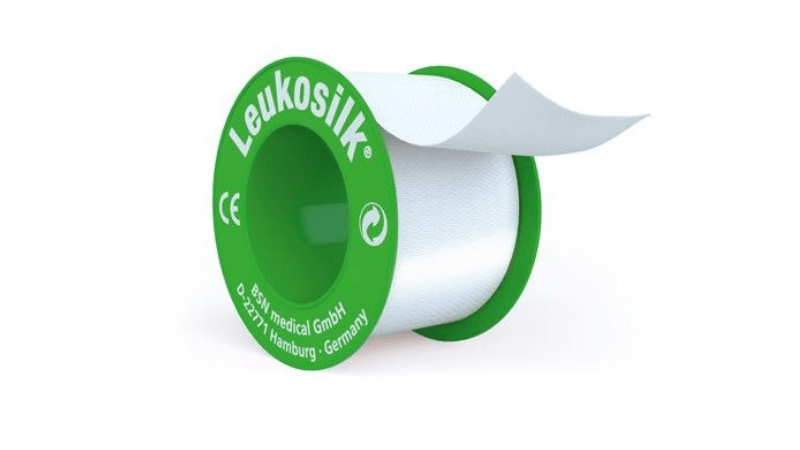
Lastly, surgical tape is among the PSAs widely used in the medical industry. Medical adhesive tapes are a bit different in relation to their species. Their primary purpose is to hold bandages in place. They are allergy-proof and have been invented for being used on the skin without being the cause of a wound it closes. It encourages healing through breathability. They are simple to put and remove as well. As a matter of fact, they are pressure-sensitive, and there is no requirement for a solvent or a heat medium for their activation. They are often combined with tamper-proof evidence tape for bags so the medicines are secured well.
Surgical tapes can come in their own varieties; some of them include micropore paper tape, transpose polyethylene tape, and zinc oxide tape. The adhesive used is a mixture of semi-fluid acetates and compounds. Medical requirements revolve around speedy application and versatility, and these functions are all combined in this kind of tape. However, they cannot be used more than once for sanitation purposes. They are so diverse in the applications that they can be used for domestic first-aid, athletic purposes, and even in moisture-filled environments.
Surgical Tape Applications:
- Surgeries
- First-aid
- Wound-dressing gauze
Surgical Tape Advantages:
- Waterproof
- Stretchy
- Cost-friendly
How Does Adhesiveness Work?
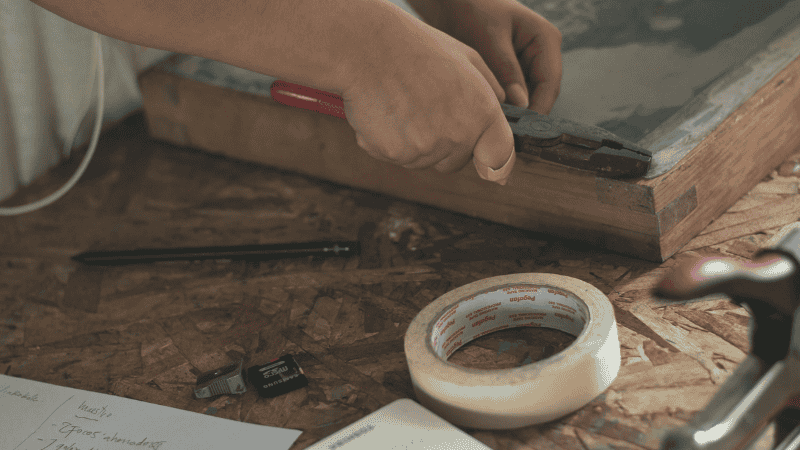
The first invention of an adhesive ‘tape’ in 1925 created a plethora of inconveniences. Masking tape resulted from a need to paint vehicles without peeling the paint off. The introduction of different tapes began, and manufacturing in industries was never the same. Cello tapes (short for cellophane tapes) were the hero during the period of the great depression. Not only did they do their job, but they also added a sense of aesthetic building. Labeling uses matte covers, while adhesive tapes are made from regular cello finishes. They were highly versatile and multipurpose friendly, so much so that they were used in the medical industries for bandaging. It became a necessity, and people took it for granted. But how exactly does it work?
It is a remarkable invention. The adhesiveness is one thing, and that in the form of a tape is another.
The Science Behind Tackiness
The working of an adhesive is slightly varied when used in the form of tape. PSAs have components like silicones and acrylic rubbers, to which a gummy epoxy resin is added for added adhesiveness. PSAs stand apart from other adhesive tapes because they require physical factors for activation rather than chemicals. To understand the process of its working, one must familiarize oneself with two concepts- the concept of wetting and the physics behind Van Der Waal’s forces, the former responsible for adhesiveness and the latter for its strength.
The process of wetting does not need much explanation. It is essentially a process of penetrating the adhesive into a substrate, the backing material, or the carrier. The glue used in this case is in the solid state, as this process leads to unstable surface molecules. Low surface energy leads to weak bonds and smoothens the penetration process. All that is required is some pressure. The lower the surface energy, the greater the flow of molecules and the stronger the resultant bond. That is how sealing tape for plastic bags is made.
Different adhesives would have different levels and degrees of penetration. To add to the strength of these PSAs, the adhesion is amplified using a phenomenon of molecular attractions called Van Der Waal forces.
They are essentially weak molecular attracting forces with partially neutral charges. Bonds cannot be formed if molecules do not have charges. As these are not entirely neutral, their imbalance in the number of electrons and protons causes weak charges. This enables them to attract themselves to other partially charged molecules in their proximity and thus results in a bond.
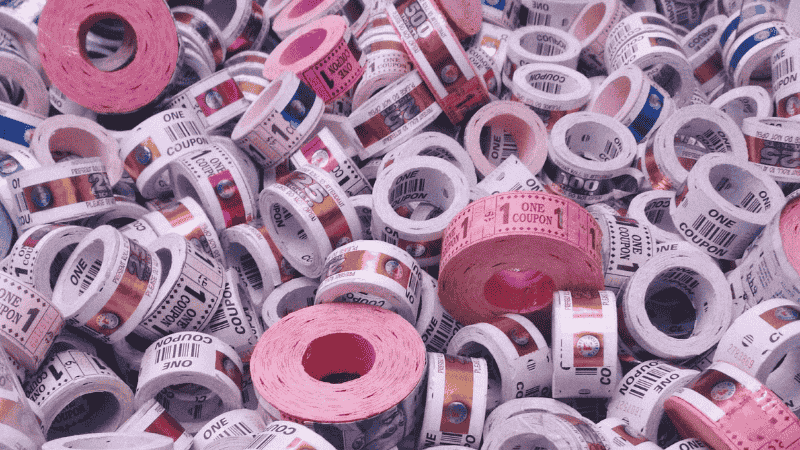
Storage methods are essential, especially for those made with silicone or rubber. Adding a liner may increase its life. Paper carriers may be weak against moisture. As such, knowing proper storage conditions for different adhesives is useful. This brings us to our next point: storing methods.
Storing Considerations And Methods
The storage environment can heavily affect an adhesive tape’s shelf life. Many variables, like temperature changes, UV, moisture, and seasons, must be considered while storing a sticking tape. We will cover three aspects of storage factors:
UV radiation: This electromagnetic radiation is also present in X-rays and Infrared lights. Though they are practically invisible to the naked eye, they have a marginal impact on the use of adhesive tape. The chemistry behind it comes back to the sticky charges. Certain degrees and periods of UV radiation exposure can lead to variations in its properties. They can sometimes become brittle and rough and wear out the stickiness. One way to avoid this possibility is to treat it with UV stabilizers or use a carrier with that protection. Keep asking, “What kind of tape will protect it from UV radiation?”.
Temperature: Heat can be a friend or a foe for sticky tape. That said, low temperatures are excellent for PSA storage. It retains stickiness and also makes it stronger. A narrow 60-degree or hotter environment is recommended for most PSAs. And the last one;
Manufacturer’s Expiry Dates: That’s right. An essential thing to do is to follow the maker’s orders. All security tape manufacturers provide this information on the product’s datasheet. Not only does it specify the period of use before expiration, but these suppliers also take the extra step to recommend environmental specifications for storing. Keep lead time in mind, and don’t forget to roll the stock to maintain its performance.
How To Choose Adhesive Tapes Through Testing Methods

To choose a suitable adhesive tape material, one must familiarize oneself with the different types of adhesives available. Some notable ones are as follows:
Resin Rubber: Being the older kind of adhesive, it combines rubber and sap. It is affordable and solid in comparison to other types of adhesive tapes. It holds together materials, even if they are hard to stick. Thanks to their strong bonds, they can resist higher temperatures to some extent. However, they oxidize quickly in the presence of air and UV rays.
Synthetic Rubber: They are manufactured rubber materials that are super adhesive instead of natural rubber. It is widely used for shipping and security purposes due to its sheer strength.
Acrylics: They form the weakest of adhesives. They resist environmental factors such as temperature, UV rays exposure, and oxidation. As a limitation, they seem to be out of budget for commercial usage. They also require lag time to activate their stickiness.
Silicone adhesives: These adhesives are long-lasting. They are incredibly durable and skin-friendly. Due to this property, they are used in bandaids in the medicine industry. Thanks to excellent heat resistance, they are widely used in the electrical and temperature-based industries. Unfortunately, they are on the expensive side of the budget spectrum, even more so than acrylics.
That said, there are some testing variables to understand the various properties of the tape. They are as follows:
- Peel adhesion: The force required to break a bond between the PSA and the surface material. This testing method tests the adhesion strength by peeling the tape at a uniform pressure and speed at a certain angle. It calculated the extent of bond breakage. It is represented by oz/in.
- Tack: It is the adhesive property of the tape. To put it more elaborately, the tape can wet the adhesive on the surface upon contact. This measures bond formation, as opposed to peeling adhesion. This is used in most tamper-evident tapes.
- Shear: It is essentially the speed of movement of an adhesive tape. It measures the sticking power and can be calculated statically or dynamically. When a static load is applied on a vertically pulled tape, the shear is referred to as static shear. Similarly, dynamic shear measures the horizontal stress of the tape.
- Tensile Strength and Elongation: Lastly, this factor measures the strength of the tape concerning its construction. Conversely, elongation is calculated as the percentage change in the tape’s length when pulled from both sides with a special force.
Storage Life And Impacting Factors
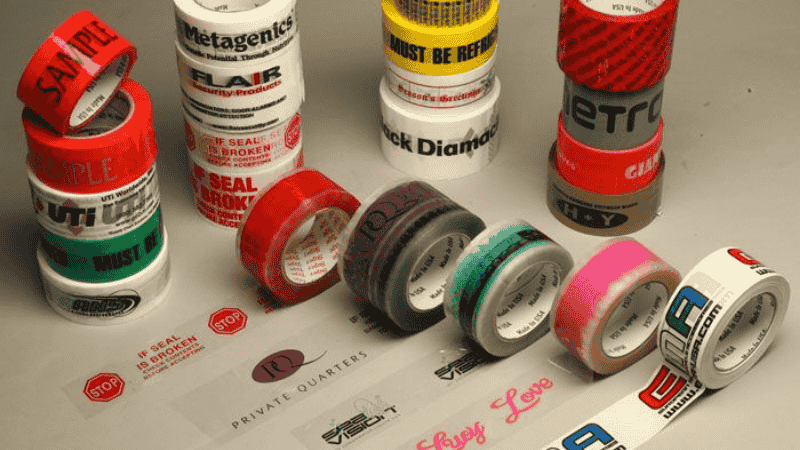
Temperature: As mentioned earlier, heat is crucial for adhesive retention. This includes the adhesive, the carrier, and the surface to which it is applied. Make sure that these materials are at least 65 degrees Fahrenheit.
Surface: Many complaints about the adhesive tape are actually the problem of the surface. Vestiges of dirt or moisture can destroy the tape’s properties and create a barrier. To avoid this, give it a quick wash of rubbing alcohol with a dry, clean cloth. Another factor to consider is the uniformity (regularity) of the surface. Irregular surfaces can slightly damage the thin, smooth surface.
Chemistry: The composition of the surface also plays a massive role. The adhesive tape can be secured differently based on whether it is made of plastic, covered with paint coating, has a release liner, etc. Keep in mind that if the surface is waxed, there is a need to buy tackier tape. This applies to the adhesive, backing material, release liner, etc.
Humidity: Moisture can wear out the stickiness if the adhesive happens to be weak.
Shelf life: The security tape manufacturers best determine the usable period. This must be the first factor when looking for adhesive tape. It would be shown in the datasheet or behind the package under normal circumstances. Pay attention to their recommendations as well.
Other: The type of adhesive, carrier, covering liner, application method, adhesive tape manufacturer, and storage conditions can also determine the strength and usable period of using the tape effectively and efficiently.
Tips On Adhesive Tape Removal

- Before attempting to remove the adhesive tape or any residue, it is crucial to test the removal method on a negligible area to ensure minimal damage. This is because painted or glossed surfaces are sensitive to most removal methods, and using these methods can destroy, discolor, or peel the shell. Be extremely careful in this regard.
- Be agile and speedy. While removing the adhesive tape, create imagery of removing a bandaid. Speed can make a clean removal with minimal residue. This needs to be done, especially in case of a void tape.
- Scraping can also prove helpful under certain circumstances. This is especially true for construction adhesives. Just be mindful of protecting the surface and preventing damage.
- Soap proves helpful in removing adhesives made of plaster, enamel, and vinyl. This also works for copper and asphalt-based bonds. Make sure the water is warm, as this will soften the tape.
- Apart from the heat from warm water, try to apply dry heat from dryers or blow torches. As mentioned above, the tape can be sensitive to heat and moisture, and exposure to them can reduce tackiness by a significant degree.
- Applying rubbing alcohol can remove it smoothly without damage. This is especially the case for handling PSAs. Wait for a while after application for penetration. Any kind of alcohol-based solvent works in this regard.
Conclusion
There are as many types of adhesives as there are carriers of so. The kind of adhesion used, or the substrate and liner it is coated heavily influence the tape’s lifespan, durability, and strength. Although usually, they range from 1-2 years, they can vary by a marginal degree depending on their storage environment. This is extremely important as these adhesive tapes risk characteristic variations and changes in their properties. One thing to remember is that adhesives are a broader topic, while tapes fall under it.
Get Your Adhesive Tape Today!
Security tapes provide multipurpose versatility and robust security for securing packages. Contact us to get some now!
